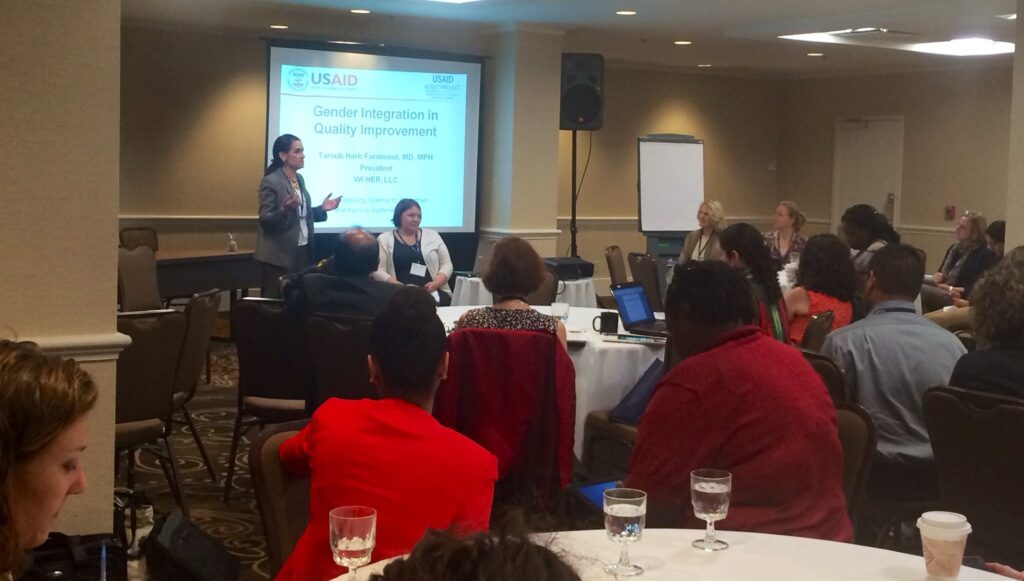A Gender Lens across the Health Sector; Reflections from the CORE Group Spring Meeting
By Elizabeth Romanoff Silva, MPA on May 12, 2014
Last week marked the semi-annual CORE Group Spring 2014 Global Health Practitioner Conference, hosted in Silver Spring May 6-9, 2014. My biggest take-away from the CORE Group meeting is that there is an obvious interest in gender integration across programs, and practitioners must have a gender lens to everything they do in the health sector. Our USAID Applying Science to Strengthen and Improve Systems (ASSIST) Project’s gender team had the opportunity to present in three sessions specifically about our gender work through ASSIST at the CORE Group Spring Meeting.
Dr. Taroub Harb Faramand, President of WI-HER, LLC, presented about how ASSIST is using a quality improvement methodology to prevent and respond to gender-based violence (GBV). Dr. Faramand and I both presented about how our USAID ASSIST team is influencing gender-related behaviors of women, men, boys, and girls to improve health outcomes, and I presented a poster about our work to involve male partners to improve retention of mother-baby pairs in PMTCT programs in Uganda, Tanzania, and Burundi.
The interest and discussions generated from the gender and GBV sessions were impressive. Some participants expressed the need for more capacity building on how health programs which don’t focus primarily on GBV can address GBV issues. The WI-HER approach under the USAID ASSIST Project allows practitioners to identify GBV issues affecting health outcomes and design local solutions to respond to GBV and to improve outcomes. There was a lot of excitement surrounding our very unique approach to integrate gender, using the science of improvement to identify gender-related service and quality gaps, propose changes to test, and respond to those issues, to close gaps and to improve outcomes. Participants commented that they liked that our approach is based on data and generates evidence.
But I’m happy to report that gender issues were not only mentioned during our presentations. They were reflected in the keynote speech by Dr. Carrissa F. Etienne, Director of the Pan American Health Organization (PAHO), who spoke about issues relating to gender and equity in Latin America and how PAHO works to respond to those needs. Gender was highlighted during the lunchtime Family Planning 2020 session during which providing family planning options to meet the reproductive needs of women and the specific needs of girls was mentioned; and in the concurrent session on hidden populations, where the discussion turned to the different needs of males and females among hidden populations: the different needs of elderly males and elderly females, LGBTI females and males (and transgender and intersex individuals), and disabled men and women. For our USAID ASSIST team, gender is not a stand-alone component to be addressed separately in projects. Gender is integrated into all of the work we do, as a means of improving health outcomes. So it was fantastic to see this integration happen organically at CORE Group sessions too.
The most interactive session I attended at the CORE Group conference was hosted by the social and behavior change (SBC) working group, of which I am a member. The SBC working group session included hands-on and practical training about conducting barrier analyses for gender-related behaviors, including male involvement in newborn and child health, child marriage, female infanticide, and health-seeking behaviors of males, among other behaviors. The conversations were very thought provoking and invoked deep discussion and reflection. The CORE Group Spring 2014 Conference provided a unique platform for global health practitioners to learn from each other and share experiences in a unique way. I found the conference to be excellent, and I’m already looking forward to the fall conference!
